 |
 |
 |
| |
Two HAART Interruption Studies Presented at Glasgow HIV Conference Nov 10 2008
|
| |
| |
Reported by Jules Levin
From Jules: neither study reports data from inflammation markers yet. It appears that suppressing HIV RNA aso suppresses inflammation but inflammation can also be associated with many things includine lipoatrophy, visceral fat, lipid elevations, insulin resistance and diabetes, chronic viral diseases and more. So HIV+ individuale could still have detectable inflammation cespite having undetectable HIV viral load. What are the long term outcomes of this, I don't think we know yet, and taken into consideration - what are the effects of mitochondrial damage and HAART effects over years - understanding these questions should be the research goals of studying aging with HIV.
CD4-guided STI in patients responding to HAART
Franco Maggiolo1, Monica Airoldi1, Annapaola Callegaro1, Canio Martinelli2, Alberto Dolara3, Teresa Bini4, Giampietro Gregis1, Gianpaolo Quinzan1, Veronica Ravasio1, Fredy Suter1.
Ospedali Riuniti, Bergamo1; Ospedale Careggi, Firenze2; Ospedale San Gerardo, Monza3; Ospedale San Paolo, Milano4; Italy

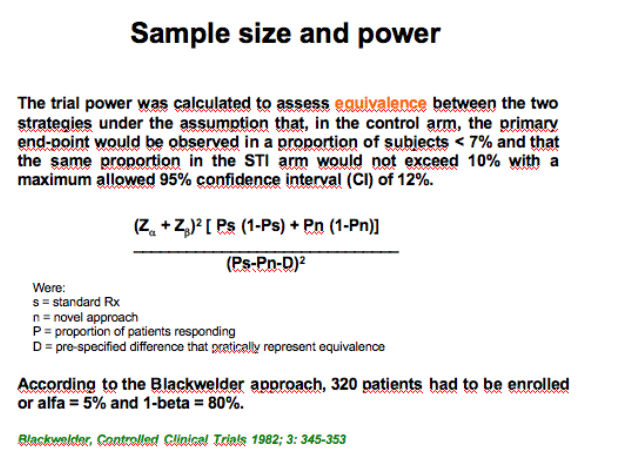
The nadir CD4 may have had an effect in this study. Apparently my understanding is that nadir CD4 above 200 was required to enter the study and in this table you see 15% in the STI arm nadir CD4 below 250. So perhaps an analysis of only this patient group would be interesting. Another point for discussioni s that as uou can see in subsequent slides below the Maggio is able to monitor patient's CD4 count off therapy closely so they do not appear to spend time with low CD4s (% of FU with <250 CD4 count: in LOTTI o.5% vs 8.6% for SMART, see slide below).
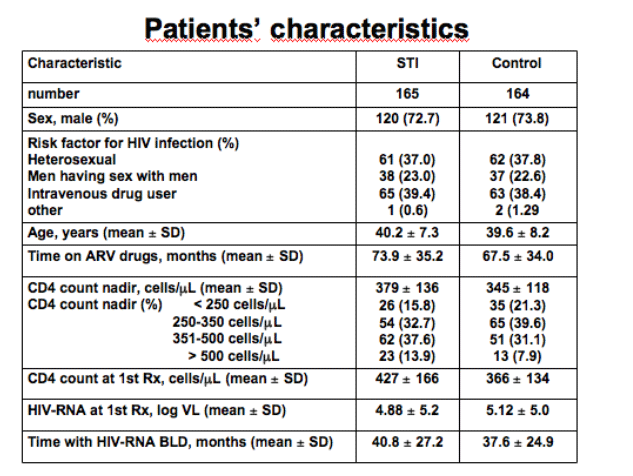
from Jules: this slide shows that patients with CD4 nadir <250 spent 40% of followup time in study off therapy, and for patients with CD4 nadir above 500 they were off therapy 85% of study followup time.
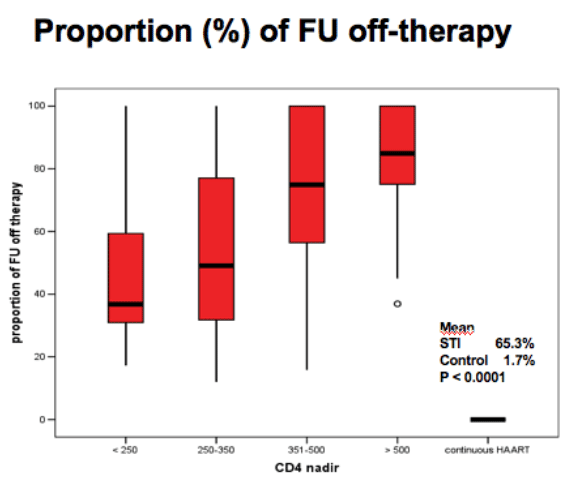
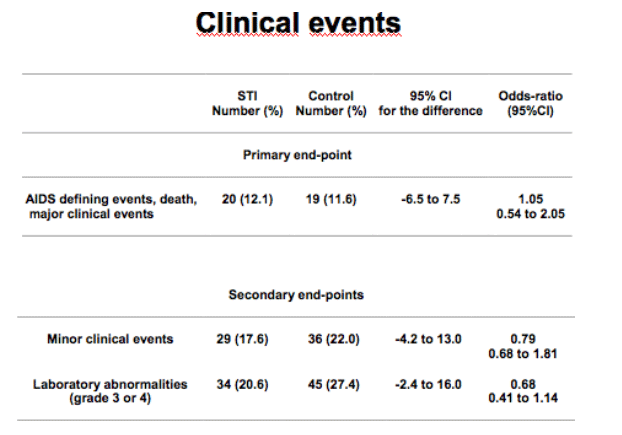
from Jules: There were more cases of pneumonia in the STI arm than in the continuous therapy arm. There were 4 cases of cardiovascular disease in the comtinuous arm and none in the STI arm. There were more cases of diabetes under Minor Events in the continuous arm, more cases of hypertension (although this might not be significant). Otherwise nothing particularly stando out in this table.
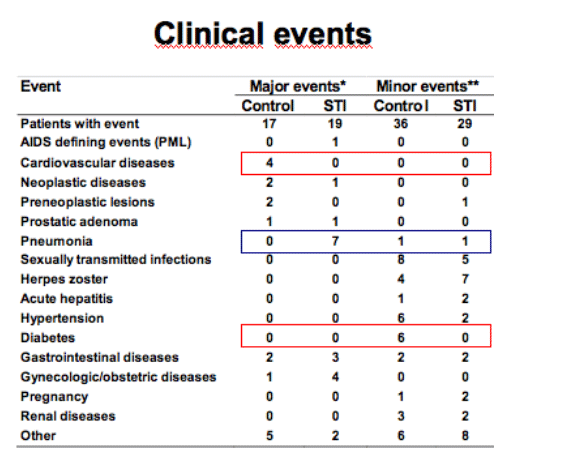
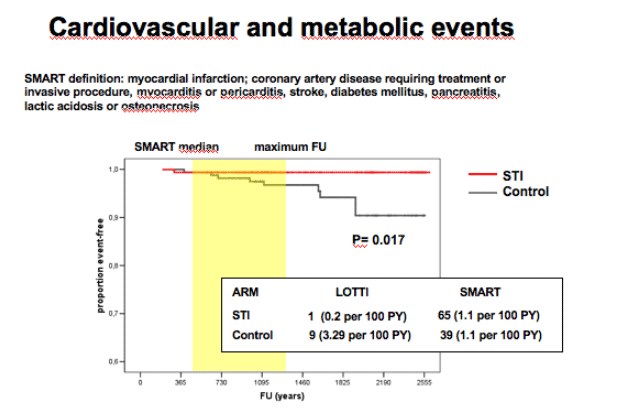
From Jules: This slide shows patients in LOTT were more able to keep CD4 above 350 (95% vs 67% in SMART). I'm assumine that due to tight control regarding monitoring patients on STI they could prevent CD4 declines too low and restart therapy as CD4 fell low, and they were able to do this better than in SMART. This raises a question regarding systems of care. In the USA could care providers have the time and capacita to adequately and closely manage patients cd4 counts off therapy-this is I think a concrn. The care system in the USA is quite overburdened and patient populations are diverse. What do you do with patients on an STI who don't return in a timely manner toh ave their CD4 count monitored closely and adequately enough.
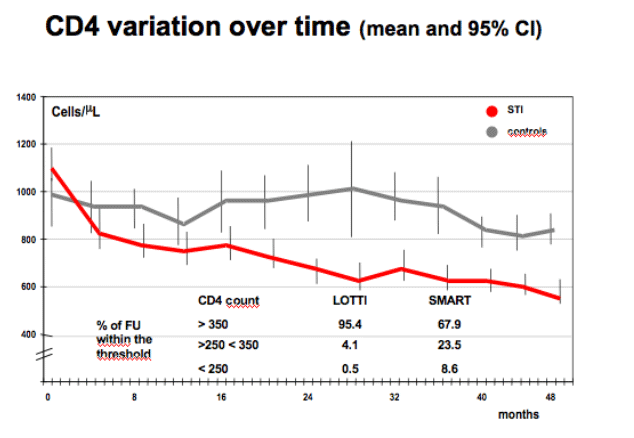

from Jules: Maggio told me they are evaluating inlammation markers. This is important because I expect they will find elevated viral loads off therapy associated with elevated inflammation markers. The outcomes of patients over time with elevated inflammation markers raises I think important concerns.
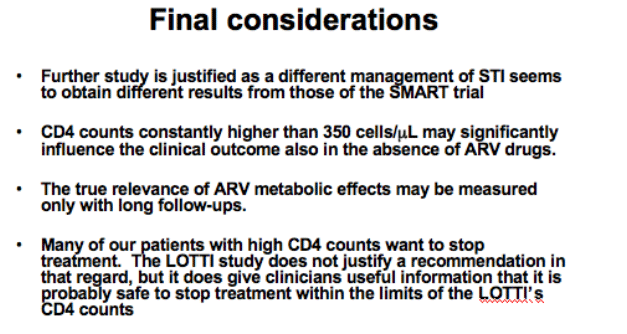
The FOTO Study: Twenty-Four Week Results Support the Safety of a Two Day Break on Efavirenz-Based Antiretroviral Therapy
C Cohen*, A Colson*, G Pierone, E deJesus, F Kinder, R Elion, D Skiest*, A Habel*, J Jensen*, J Garb, H Schrager*
*CRI New England Harvard Medical School Boston USA
From Jules: a criticism of this approach is that it can be a challenge for patients to maintain strict adherence to this protocol of 5 days on and 2 days off.

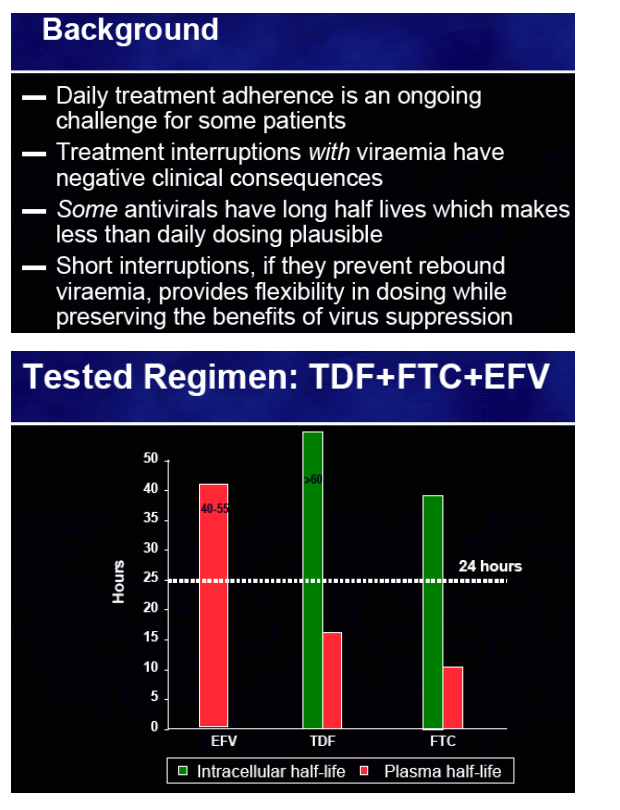
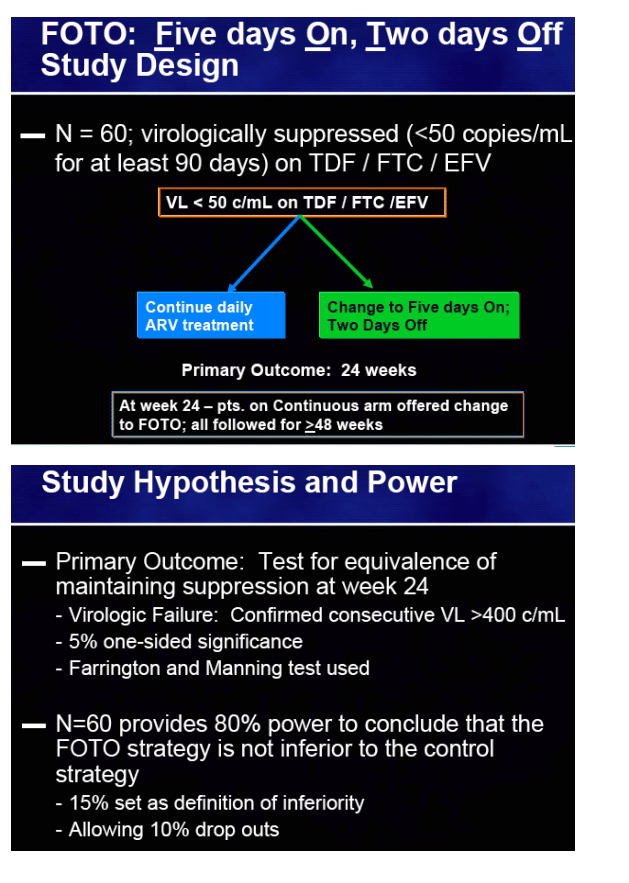
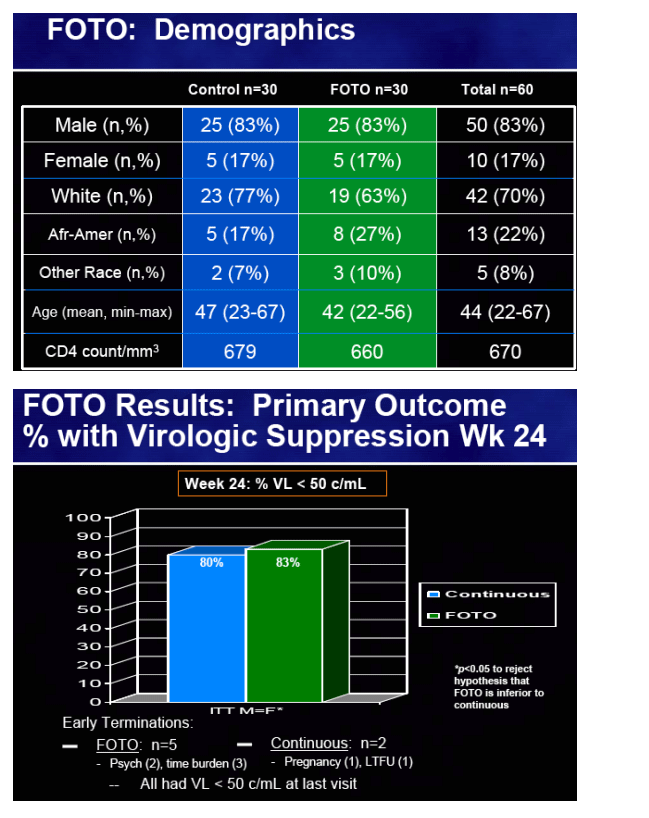
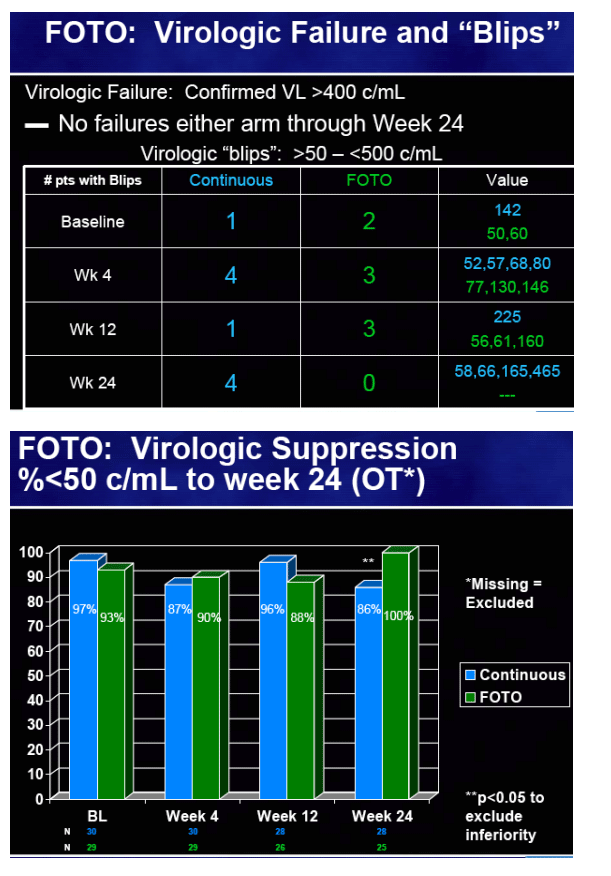
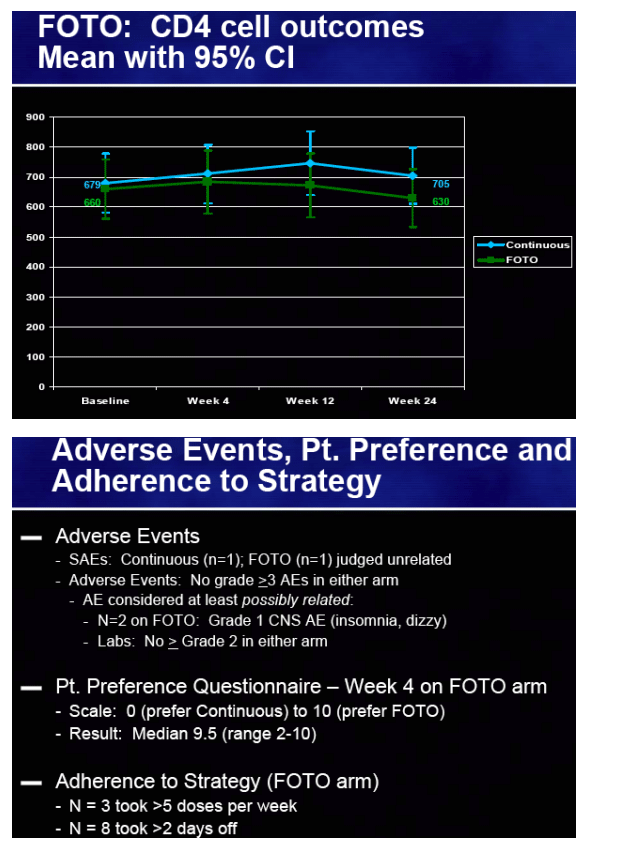

|
| |
|
 |
 |
|
|